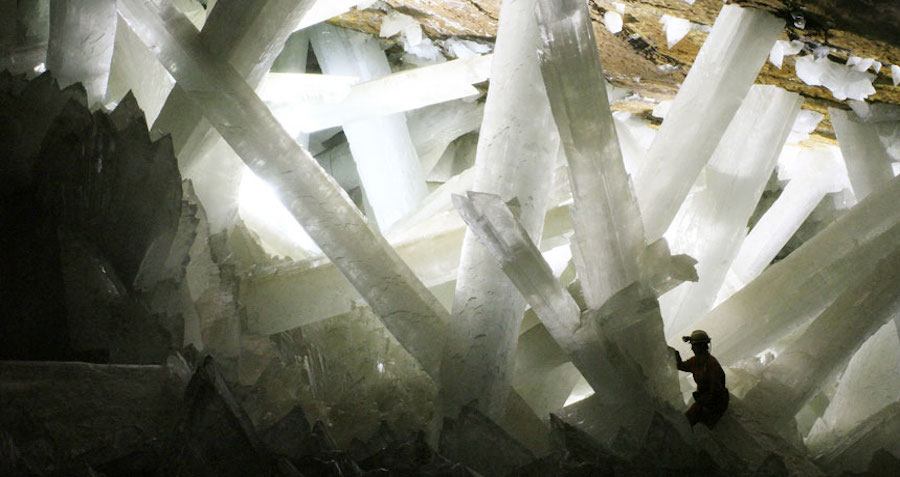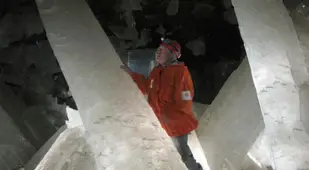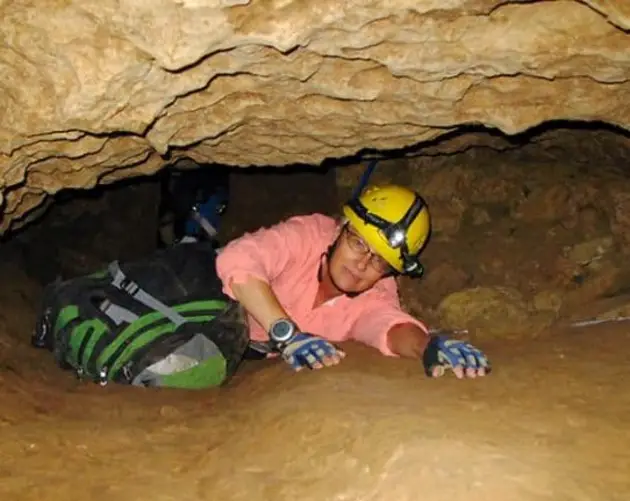This discovery hints at the potential of finding extraterrestrial life in places just as inhospitable to life as these caves.

Alexander Van Driessche/Wikimedia Commons Giant
crystals inside the Naica mine in Chihuahua, Mexico contain microbial
life-forms that have been trapped for up to 50,000 years.
NASA scientists have discovered never-before-seen
microbial life forms in crystal caves located deep below the surface in
Mexico.
Dormant for thousands of years, the researchers found the microbes
hiding in tiny pockets of liquid buried inside the giant crystals
residing within Mexico’s enormous Naica Mine. Apparently, these microbes
have been hibernating there for up to 50,000 years, eating iron, sulfur
and other chemicals to survive.“These organisms are so extraordinary,” said Penelope Boston, an
astrobiologist and the director of the NASA Astrobiology Institute,
during a news conference this past Friday at the annual meeting of the
American Association for the Advancement of Science (AAAS), according to
Science News.
Despite being inactive for such a long time, the microbes “remained
viable in some fashion and were able to be regrown” after Boston’s team
reawakened them in a laboratory.
Because there is no sunlight inside the cave, the microbes can’t use
photosynthesis to produce food. Instead, they use a process called
chemosynthesis to “eat” iron and sulfur, which is in ready supply thanks
to the monstrous, subterranean crystals located inside the cave.
The discovery hints at the potential of finding extraterrestrial life in places just as inhospitable to life.While it’s home to 36-foot-long crystals that are too wide for any
human to put their arms around, Naica mine is a desolate place for any
life form. It is unbearably acidic, and pitch-black at 1,000 feet below
the surface. Temperatures can reach as high as 149 degrees Fahrenheit,
with humidity levels nearing 99 percent. On a cold day, the temperature
will only drop to 113 degrees Fahrenheit.
“Any extremophile system that we’re studying actually allows us to
push the envelope of life further,” Boston said. “We add it to this
atlas of possibilities that we can apply to different planetary
settings.”

However, considering that Boston's team has yet to publish their
research in a peer-reviewed journal, some scientists have cast doubt on
the discovery.
"I think that the presence of microbes trapped within fluid
inclusions in Naica crystals is in principle possible," said
Purificación López-García, a microbiologist from the French National
Centre for Scientific Research who helped find life in the same cave's
springs in 2013, to National Geographic.
"[But] contamination during drilling with microorganisms attached to
the surface of these crystals or living in tiny fractures constitutes a
very serious risk," she added, "[and] I am very skeptical about the
veracity of this finding until I see the evidence."
Still, Boston's team has defended their work by saying that the
microbes that they found are different from the other organisms living
in the cave.
"We have also done genetic work and cultured the cave organisms that
are alive now and exposed," Boston told National Geographic, "and we see
that some of those microbes are similar but not identical to those in
the fluid inclusions."If Boston and her team turn out to be right, it means big things for the possibility of finding life in outer space.






No comments:
Post a Comment